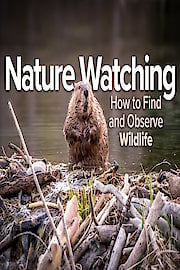
























In this course, you'll learn the core elements of tracking, such as identifying and interpreting animal tracks; tracking the amazing world of birds; the language of animal marking; going invisible; bedding, nesting, and mating in the wild; and the art of trailing, as you discover a richly rewarding way of knowing the world.
Nature Watching: How to Find and Observe Wildlife is a series that ran for 1 seasons (24 episodes) between November 1, 2023 and on The Great Courses
-
Channel
-
Premiere DateNovember 1, 2023

-
 Watch Unlimited Prime Video TV Shows
Watch Unlimited Prime Video TV Shows
-
 Anytime, Anywhere
Anytime, Anywhere
-
 Ad-free Videos
Ad-free Videos

 Watch Unlimited Prime Video TV Shows
Watch Unlimited Prime Video TV Shows
 Anytime, Anywhere
Anytime, Anywhere
 Ad-free Videos
Ad-free Videos


























